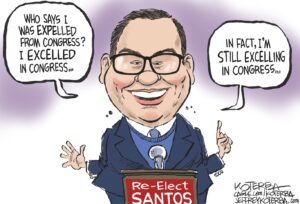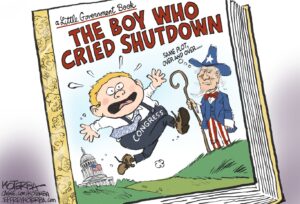Cracking Down on Fracking
Mike Markham of Colorado has an explosive problem: His tap water catches fire.Mike Markham of Colorado has an explosive problem: His tap water catches fire. Markham demonstrates this in a new documentary, “Gasland,” which just won the Sundance Film Festival Special Jury Prize. Director Josh Fox films Markham as he runs his kitchen faucet, holding a cigarette lighter up to the running water. After a few seconds, a ball of fire erupts out of the sink, almost enveloping Markham’s head.
The source of the flammable water, and the subject of “Gasland,” is the mining process called hydraulic fracturing, or “fracking.”
Fracking is used to access natural gas and oil reserves buried thousands of feet below the ground. Companies like Halliburton drill down vertically, then send the shaft horizontally, crossing many small, trapped veins of gas and oil. Explosive charges are then set off at various points in the drill shaft, causing what Fox calls “mini-earthquakes.” These fractures spread underground, allowing the gas to flow back into the shaft to be extracted. To force open the fractures, millions of gallons of liquid are forced into the shaft at very high pressure.
The high-pressure liquids are a combination of water, sand and a secret mix of chemicals. Each well requires between 1 million and 7 million gallons of the fluid every time gas is extracted. Drillers do not have to reveal the chemical cocktail, thanks to a slew of exemptions given to the industry, most notably in the 2005 Energy Policy Act, which actually granted the fracking industry a specific exemption from the Safe Drinking Water Act. California Congressman Henry Waxman, chair of the House Energy and Commerce Committee, has just announced an investigation into the composition of the proprietary chemicals used in fracking. In a Feb. 18 letter, Waxman commented on the Safe Drinking Water Act exemption: “Many dubbed this provision the ‘Halliburton loophole’ because of Halliburton’s ties to then-Vice President Cheney and its role as one of the largest providers of hydraulic fracturing services.” Before he was vice president, Dick Cheney was the CEO of Halliburton.
In an earlier investigation, Waxman learned that Halliburton had violated a 2003 nonbinding agreement with the government in which the company promised not to use diesel fuel in the mix when extracting from certain wells. Halliburton pumped hundreds of thousands of gallons of toxic, diesel-containing liquids into the ground, potentially contaminating drinking water.
According to the Department of Energy, there were more than 418,000 gas wells in the U.S. as of 2006. Since the Environmental Protection Agency lacks authority to investigate and regulate fracking, the extent of the pollution is unknown. Yet, as Josh Fox traveled the country, becoming increasingly engrossed in the vastness of the domestic drilling industry and the problems it creates, he documented how people living near gas wells are suffering water contamination, air pollution and numerous health problems that crop up after fracking. It’s personal for Fox: He lives in Pennsylvania, on a stream that feeds into the Delaware River, atop the “Marcellus Shale,” a subterranean region from New York to Tennessee with extensive natural gas reserves. Fracking in the Marcellus Shale could potentially contaminate the water supplies of both New York City and Philadelphia. Fox was offered almost $100,000 for the gas rights to his 19 acres, which led him to investigate the industry, and ultimately to produce his award-winning documentary.
There is virtually no federal oversight of fracking, leaving the budget-strapped states to do the job with a patchwork of disparate regulations. They are no match for the major, multinational drilling and energy companies that are exploiting the political goal of “energy independence.” The nonprofit news website ProPublica.org found that, out of 31 states examined, 21 have no regulations specific to hydraulic fracturing, and none requires the companies to report the amount of the toxic fluid remaining underground.
Reports indicate that almost 600 different chemicals are used in fracking, including diesel fuel and the “BTEX” chemicals: benzene, toluene, ethylbenzene and xylenes, which include known carcinogens.
Dr. Theo Colborn, zoologist and expert on chemical pollution from fracking, appears in “Gasland,” saying, “Every environmental law we wrote to protect public health is ignored. … We can’t monitor until we know what they’re using.”
Fox ends “Gasland” with an excerpt of a congressional hearing. Rep. Diana DeGette, D-Colo., and Rep. Maurice Hinchey, D-N.Y., aggressively question gas industry executives about water contamination. The two have submitted a bill, the proposed FRAC Act, which would remove the “Halliburton loophole,” forcing drillers to reveal the chemical components used in fracking. It’s time to close the door on the Cheney energy policy and take immediate steps to protect clean water.
Denis Moynihan contributed research to this column.
Amy Goodman is the host of “Democracy Now!,” a daily international TV/radio news hour airing on more than 800 stations in North America. She is the author of “Breaking the Sound Barrier,” recently released in paperback and now a New York Times best-seller.
© 2010 Amy Goodman
Distributed by King Features Syndicate
Your support matters…Independent journalism is under threat and overshadowed by heavily funded mainstream media.
You can help level the playing field. Become a member.
Your tax-deductible contribution keeps us digging beneath the headlines to give you thought-provoking, investigative reporting and analysis that unearths what's really happening- without compromise.
Give today to support our courageous, independent journalists.






You need to be a supporter to comment.
There are currently no responses to this article.
Be the first to respond.